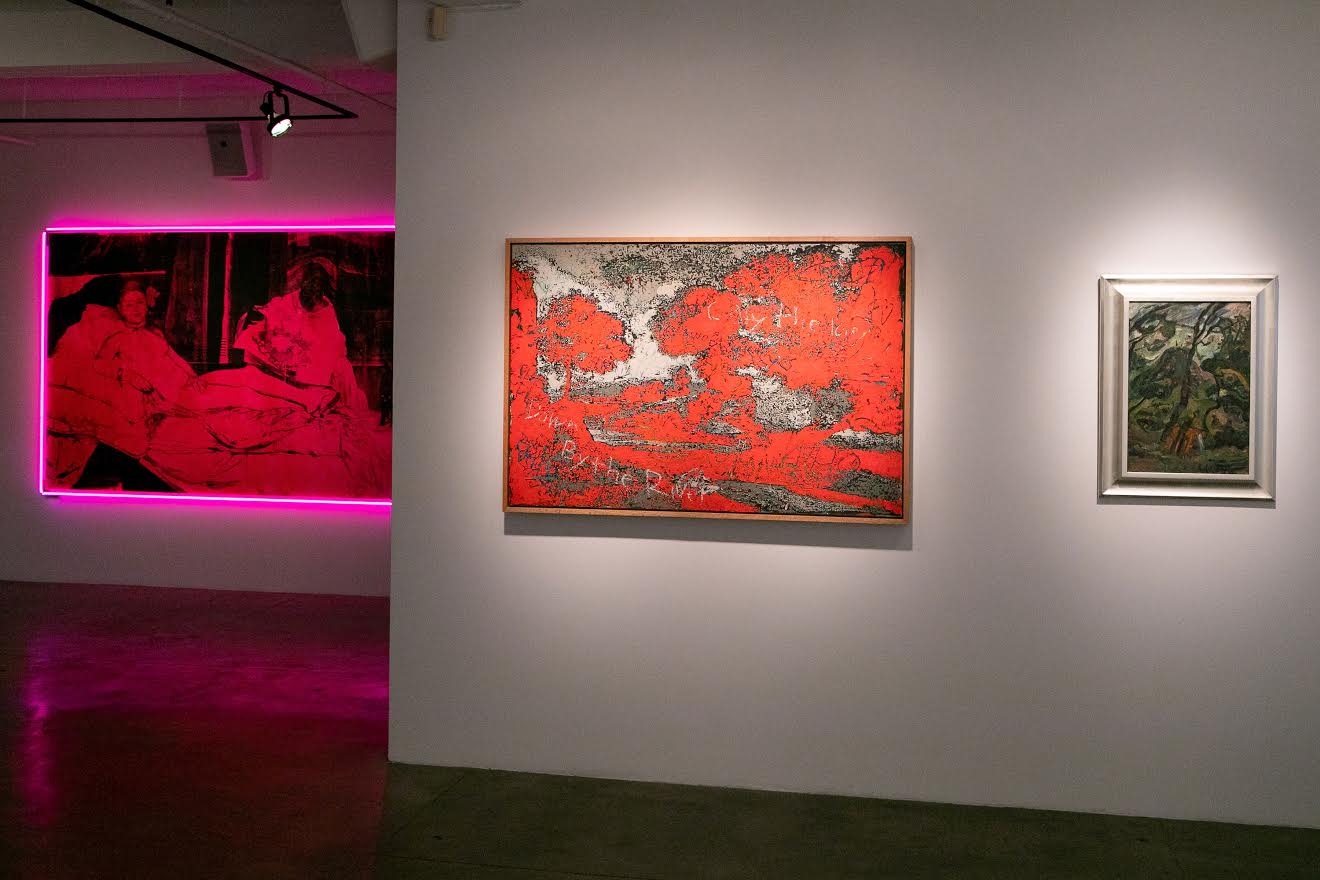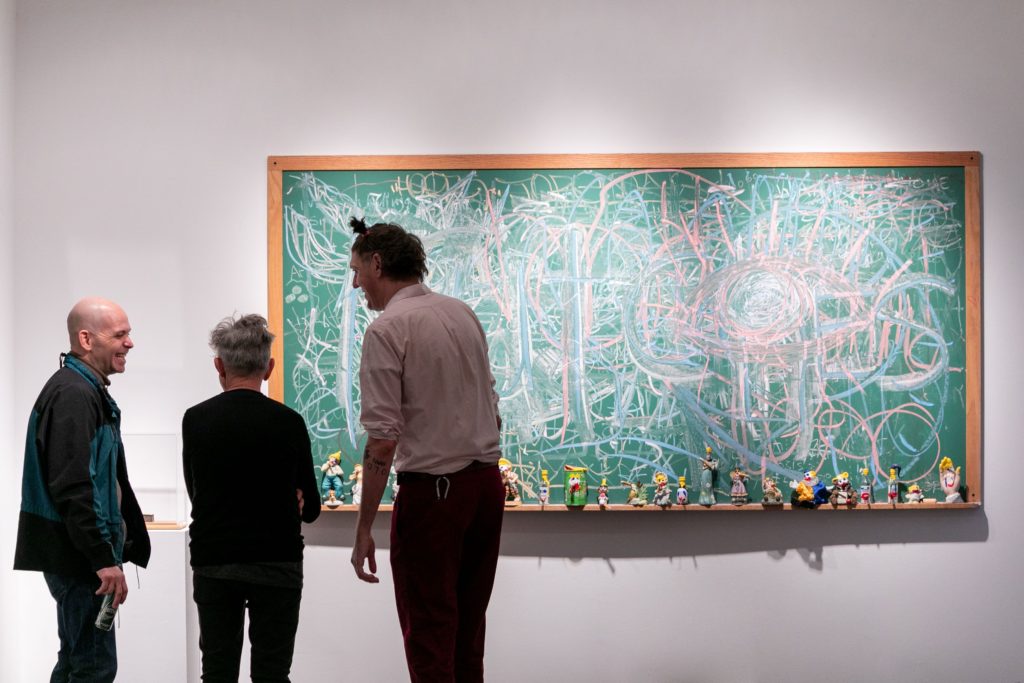[ad_1]

Bruce High Quality Foundation, “The End of Western Art. “
COURTESY THE ARTISTS/ACA GALLERY
Known for its irreverence, anonymity, and unrelenting impishness, the Bruce High Quality Foundation has resurfaced with its first show in three years, a solo outing titled “The End of Western Art” that is on view at ACA Galleries in New York through June 21.
The last time we heard from the collective of Bruces, as they’re called, was back in 2017, when their free, unaccredited art school, the Bruce High Quality Foundation University, was closing after eight years of outside-the-box arts education. Fittingly, this new show could be seen as an art history class of a kind: each BHQF work is presented alongside a piece by an artist to which it alludes. Names on the guest list include Pablo Picasso, Chaim Soutine, Albert Pinkham Ryder, Marcel Duchamp, and Joseph Cornell. One pairing is a chalkboard covered in frenetic scribbles with a Joseph Beuys readymade—an eraser—perched next to it. School is very much in session.
The Bruces are committed to their shadowy identity, and thus declined to speak with ARTnews. However, Nemo Librizzi, a collector of the group’s work, who curated the show with ACA director Mikaela Sardo Lamarche, was eager to attest to their powers. “Unlike other artists who are inspired by the artists who came before them and try to conceal it,” he told me, BHQF’s members “lay it all bare and show you the puppet strings.”

Bruce High Quality Foundation, “The End of Western Art. “
COURTESY THE ARTISTS/ACA GALLERY
Some piquant examples of the group’s engagement with the art of the past have included Public Sculpture Tackle, which saw Bruces in football-gear pummeling public artworks throughout New York, and Floating Island, for which they stuck a faux Christo & Jeanne-Claude gate atop Robert Smithson’s Floating Island as it circled Manhattan.
One of the most dramatic juxtapositions in the show takes the form of a deep stare between two busts of Egyptian pharaohs. In one corner is a weathered sarcophagus from the Late Dynastic Period, and in another is a cigarette-smoking, spatter-painted ceramic version of the same sarcophagus. There’s a strange, palpable tension between the two of them. “If that’s not a modern altarpiece,” Librizzi mused, “I don’t know what is.”

Bruce High Quality Foundation, “The End of Western Art. “
COURTESY THE ARTISTS/ACA GALLERY
Once viewers pass through the eye-line of the sarcophagi, the group’s most recent pieces are on display: Play-Doh replicas of ancient Greek and Roman antiquities from the Metropolitan Museum of Art sit in a glass case alongside antiquities that the Bruces would like you to believe are on loan from the Met but are in fact mostly loans from private collections. As with all the works in the show, these sculptures are unlabelled, challenging viewers to guess which are authentic and which are not.
“They’re wandering through the world of art, and they are thumbing their nose at some of it and want to draw a mustache on some of it,” Librizzi said. “But a lot of it they really respect and regard highly.”
[ad_2]
Source link

